Trailer Roundup
Mifune: The Last Samurai
Going back to before the comic started, I made it clear that much of my own aesthetic influence comes from Japanese cinema. Specifically, it comes from a few of the Akira Kurosawa films I had seen––I’m not a connoisseur of the Japanese film industry by any means. Kurosawa is kind of the Orson Welles, Steven Spielberg/George Lucas, and Martin Scorsese of his country all rolled up into a single guy who single-handedly changed the Japanese cinematic landscape.
The Scorsese comparison is interesting if only because, like Scorsese, he had a tendency to glom onto an actor and work with him (or her) prodigiously until, for some reason or other, that time came to an end. Scorsese had turns with Robert DeNiro and, later, Leonardo DiCaprio. For Kurosawa, his career is inextricably linked to the career of Toshiro Mifune, an actor with little competition. Such a connection was the bane and bounty of Kurosawa’s career, and as rocky as their relationship got (his descriptions of Mifune in his autobiography relay that tension), it’s clear that he respected his ability and benefited from it.
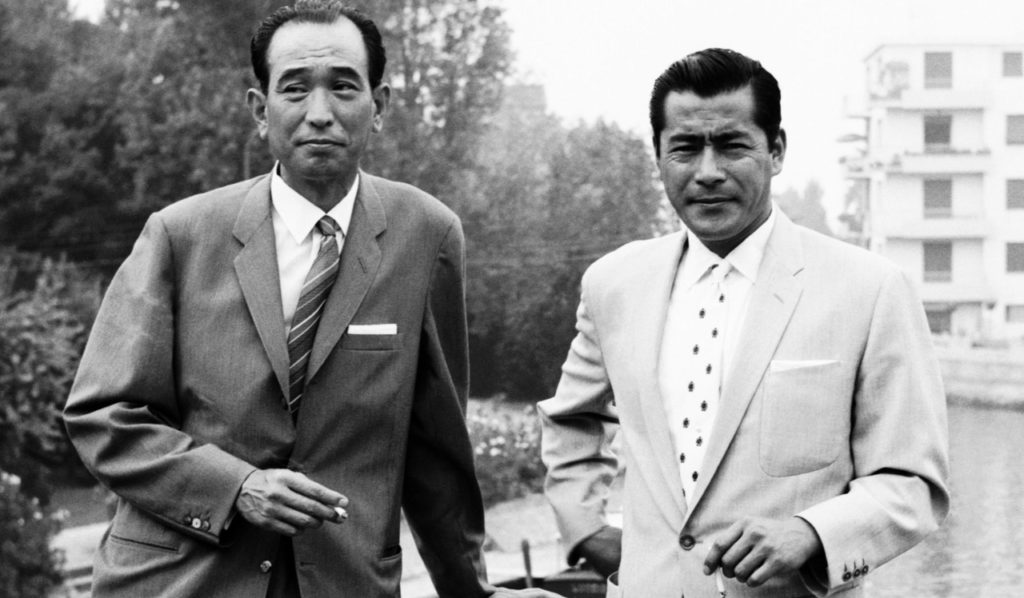
Akira Kurosawa (left) and Toshiro Mifune (right) in Venice. Source: akirakurosawa.info
Mifune’s presence and attitude left an indelible mark on me when I first saw him. It was 1961’s Yojimbo and watching that movie changed my entire life. As hyperbolic as that statement can seem, I remember seeing it for the first time, being about 13 years old and being the first black-and-white movie I didn’t fall asleep to, not to mention that it was a subtitled flick about a culture I had no reference to. So, it was an uphill battle.
But Mifune’s swagger and confidence amid his avowed loner status really spoke to me. As a kid that didn’t have many friends, as a kid who was left alone and was happier for it, Mifune showed me that being a loner didn’t have to be a self-pitying goth type of existence. Mifune’s Sanjuro Kuwabatake (his character’s “name” from Yojimbo) was just content with who he was and damn anyone who had a problem with him. There was no cynicism, just pragmatism, and that was a persona I could get behind. I did so with gusto.
Mifune died when I was a senior high school––December 1997––and I clipped out his obituary that was printed in Entertainment Weekly or Us Weekly (my mom subscribed to one of those) and pinned it to my wall until I moved out.
With that in mind, I only recently came across the trailer for a documentary about Toshiro Mifune’s life, and I only hope it gets released stateside in some form or other. If anything, it shows that Mifune kind of acted as he lived. Sure, he had problems but he was a pragmatist with a hint of idealism, which I would hope describes me closely as well. I owe a lot to the art this man made.
Mifune and Steven Okazaki’s Mifune: The Last Samurai
Blade of the Immortal
Because of Yojimbo, I’m quite open to historical samurai stories. To be honest, they’re basically westerns but with cool swords instead of cool guns, complete with a code of honor that, in the case of samurai, has actual historical precedent. I think the furthest I tested the boundary of my samurai-fiction taste was with Hiroaki Samura’s manga, Blade of the Immortal.
I admittedly took a circuitous road to Blade of the Immortal, but that road was more of a consequence of the time rather than rejection. My first exposure to Samura’s epic was a poster I saw at my local comic book shop. It was a few years before the book came out stateside and the poster was only in Japanese, but I loved the imagery: a battle-worn samurai protecting an innocent girl (I was a teenager). I asked if they were selling the poster and, with a bit of finagling, I was able to take it off their hands. It was the centerpiece of my room for a long while and I was proud of it even though I had no idea what it was for or about.
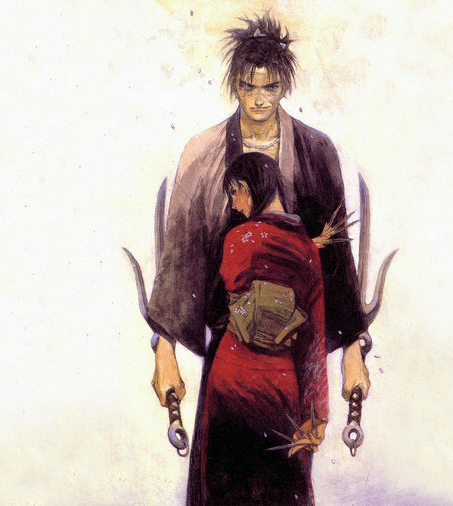
The poster image from the poster I bought, though the original poster had a bunch of Japanese written all over it.
When I was initially phasing out regular comics reading from my life, I drifted away from superheroes and toward imported comics. Manga was a new thing, spurred on mostly by Dark Horse Comics and Viz. When I saw the first issue for a comic called Blade of the Immortal, I stopped in my tracks. The character on the cover looked very familiar, but I didn’t connect the dots. It wasn’t for a few issues when the cover was the same image as the poster on my wall that I figured it out (I was a teenager) and became utterly devoted to it. I interpreted the coincidence as fate and it became a very important comic for me (as I’ve written about before).
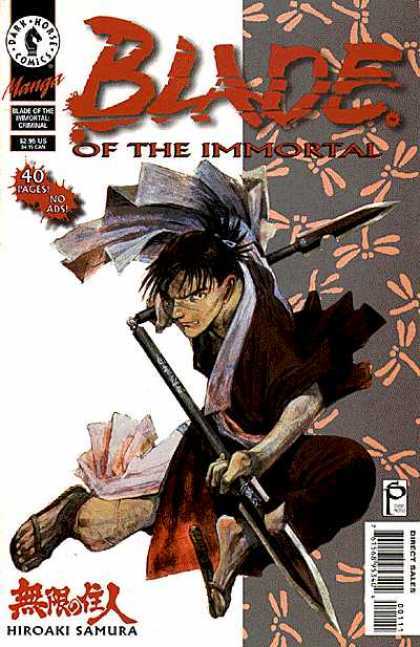
My introduction to manga. Art by Hiroaki Samura.
An anime series was made based on the comic, but I found it horribly dull, possibly because it was too faithful to the source material. It couldn’t capture the frenetic talent and passion and creativity Samura’s art vibrated with in every panel, every page.
Apparently, a live action movie is getting made and it looks interesting and faithful as well. Being live action, though, I think it has the possibility of being more interesting than a straight anime adaptation. The very interesting change seen already in the short teaser trailer that’s been released has been in the costuming of the main character, Manji, himself.
In the comic, on the back of Manji’s robe is a huge swastika. Being a comic set in pre-World War II Japan, however, it’s clear it’s not a symbol of Nazi Germany or (obviously) white nationalism. In every issue Dark Horse Comics published, there was a frontispiece that explained the swastika symbology and how it related to Buddhism and its history in Japan. Ultimately, it’s a symbol called “manji” which is the protagonist’s name. It’s the equivalent of Superman’s “S” shield on his chest.
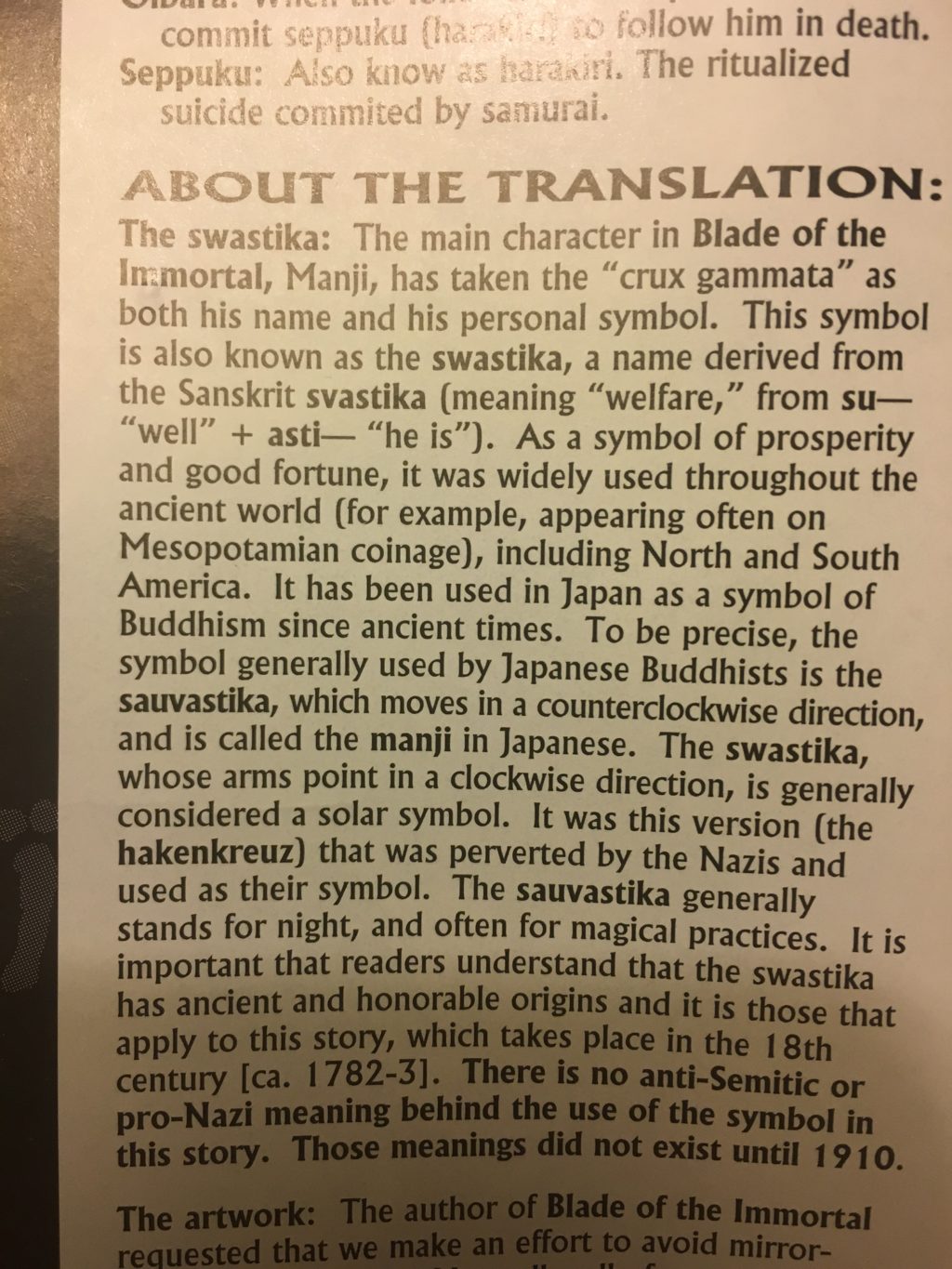
Dark Horse’s explanation of the main character’s swastika costume. Click for bigger, legible version.
But the trailer clearly shows a not-swastika on the back of Manji’s robe. It’s not that I’m upset by it, far from it. If anything, it was the first thing I thought of when I learned of the adaptation––how were they going to deal with the swastika. I don’t speak nor read Japanese, so I have no idea what’s being said in the trailer, nor do I know what is actually written on the back of Manji’s robe, but I’m sure it makes sense and will get the haughty fanboys all riled up.
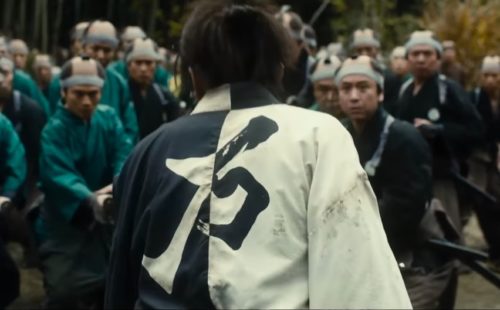
Definitely not a swastika. Screen-grabbed from the trailer.
Blade of the Immortal Live Action teaser trailer.

Discussion ¬